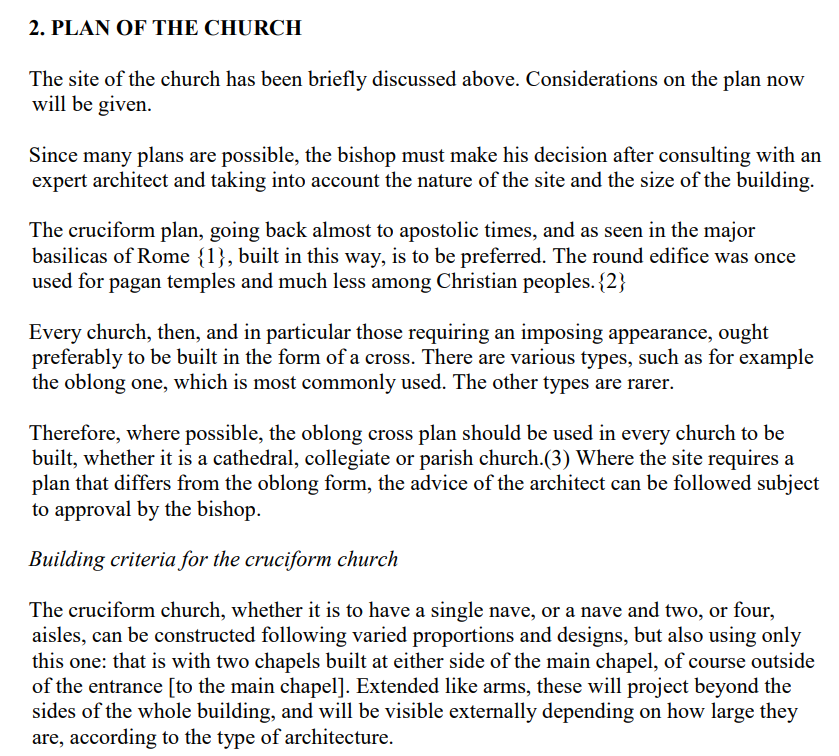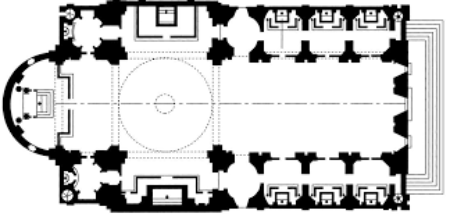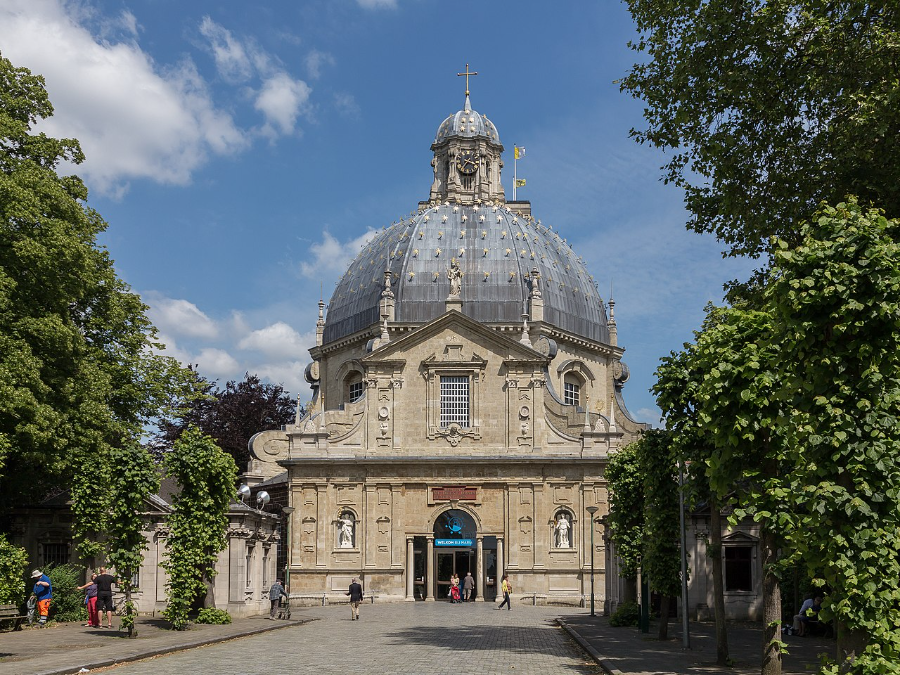wat met Carolus Borromeus?
Het bouwen van ovale kerken en koepels wordt regelmatig in verband gebracht met Carolus Borromeus, kardinaal van Milaan en een belangrijke figuur in het concilie van Trente.
Hij publiceerde zeer gedetailleerd over de vorm van kerkgebouwen en vaak wordt geschreven dat hij ronde vormen verbood omdat ze heidens waren. Gemakshalve worden hierbij ronde vormen veralgemeend tot centraalbouw.
Evelyn Voelker wijdde een groot deel van haar leven aan het bestuderen en vertalen van deze teksten. Je vindt de vertalingen online. Op pagina 6 van boek 1 schrijft Borromeus over het grondplan van de kerk:

commentaar van Evelyn Voelker
Dat leest niet bepaald op een veto tegenover centraalbouw. Evelyn Voelker gaat er verder op in (pag 8-9).
Kort samengevat: het langwerpige basilica plan is zijn eerste keuze, maar gedocumenteerde voorbeelden illustreren dat hij als bisschop van Milaan in overlegakkoord ging met centraalbouwprojecten.
Bovendien is hij
"As far as round edifices are concerned, this type of plan was used for pagan temples and is less customary among Christian people." From these words it has often been inferred that Borromeo frowned upon the central plan. But Borromeo elaborates upon this idea and concludes that some sites "require another form of building in preference to the oblong form," and that a church of such construction may be made. Actually Borromeo simply recommends the rectangular form as first choice for basilicas and parochial churches but approves the round as well. The following documentations substantiate this fact.
Serviliano Latuada in his famous description of Milan tells how during the plague of 1576 city officials under the encouragement of cardinal Borromeo approved funds to build a votive temple in honor of St. Sebastian "con disegno…del celebre Architetto Pellegrino Pellegrini."
About 1488 a location outside of the city of Milan was set apart to serve as a campsite for plague victims. during the plague of 1576-78, Borromeo, in consultation with Pellegrino Tibaldi and Ludovico Moneta approved another centrally planned building. It was to be an open, octagonal church in the center of which was an altar. Above the altar, supported by columns and pilasters, there was a small eight-sided cupola with tholos for the location of the Lazaretto and the church. The original Tibaldi plan is in the Borromeo archives at Isola Bella. The inscription, which is signed by Borromeo, states that "we approve the form and plan expressed in this picture from the advice of the skilled architect, and, carefully inspected by us, in accordance with the provisions of our instructions for church building, we concede that the construction of
this church be made and completed….".
The Archivio Arcivescovile della Curia di Milano (XXXVIII:50-26) turns up yet another centrally planned church. The document is dated 30 May 1578, and the entry description reads: Il card. Carlo Borromeo rilascia la licenza di costruire la nuova chiesa di S. Rocco, licenza scritta e sottoscritta con firma autografa, in calce al progetto disegnato a penna con la pianta della nuova chiesa. E' pure unito uno schizzo a penna con la pianta sezione circolare della cappelletta di S. Rocchino.
Il Gesu - Rome
De overgang van ronde naar ovale vormen voor grondplannen en koepels toeschrijven aan de tekst van Carolus Borromeus snijdt ook helemaal geen hout. Illustratief is het ontwerp van de Gesu in Rome door Vignola. De kerk werd gebouwd in opdracht van de Jezuieten, is ook de moederkerk van de congregatie en stond model voor de kerkenbouw in de contrareformatie. Vignola ontwierp eerst een ovalen grondplan, maar dat plan haalde het niet. De Gesu werd uiteindelijk ontworpen met basilicaal grondplan (wat ook de voorkeur wegdroeg van Carolus Borromeus) met een... ronde koepel. Er was dus helemaal geen probleem met ronde koepels op zich.

Scherpenheuvel
Carolus Borromeus mag dan wel invloedrijk zijn binnen de katholieke kerkgemeenschap, als bisschop blijft zijn beslissingsrecht beperkt tot zijn eigen bisdom. In eigen land kennen we bijvoorbeeld de monumentale basiliek van Scherpenheuvel (gewijd in 1627), die ontworpen werd als een zevenhoekige centraalbouw.
